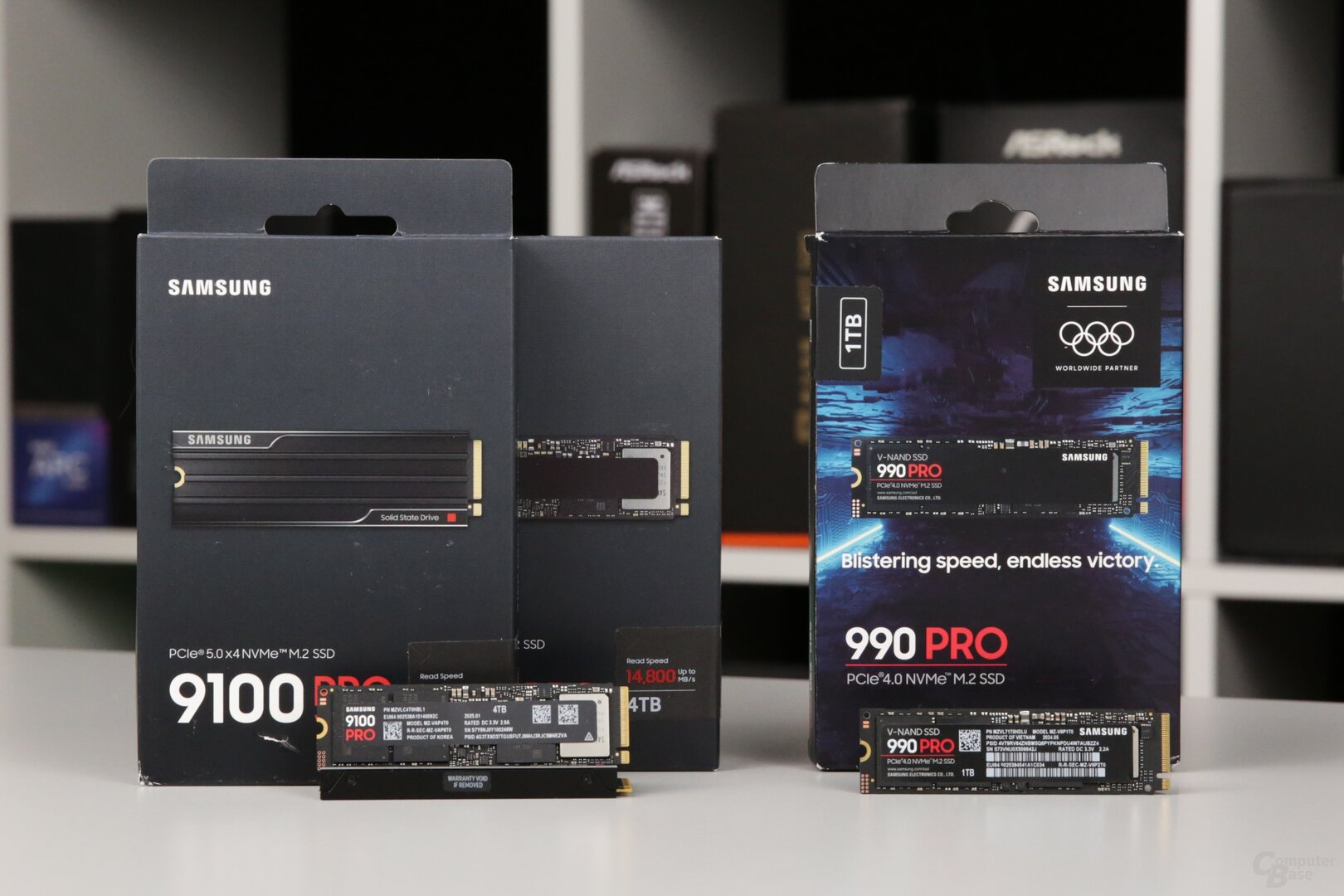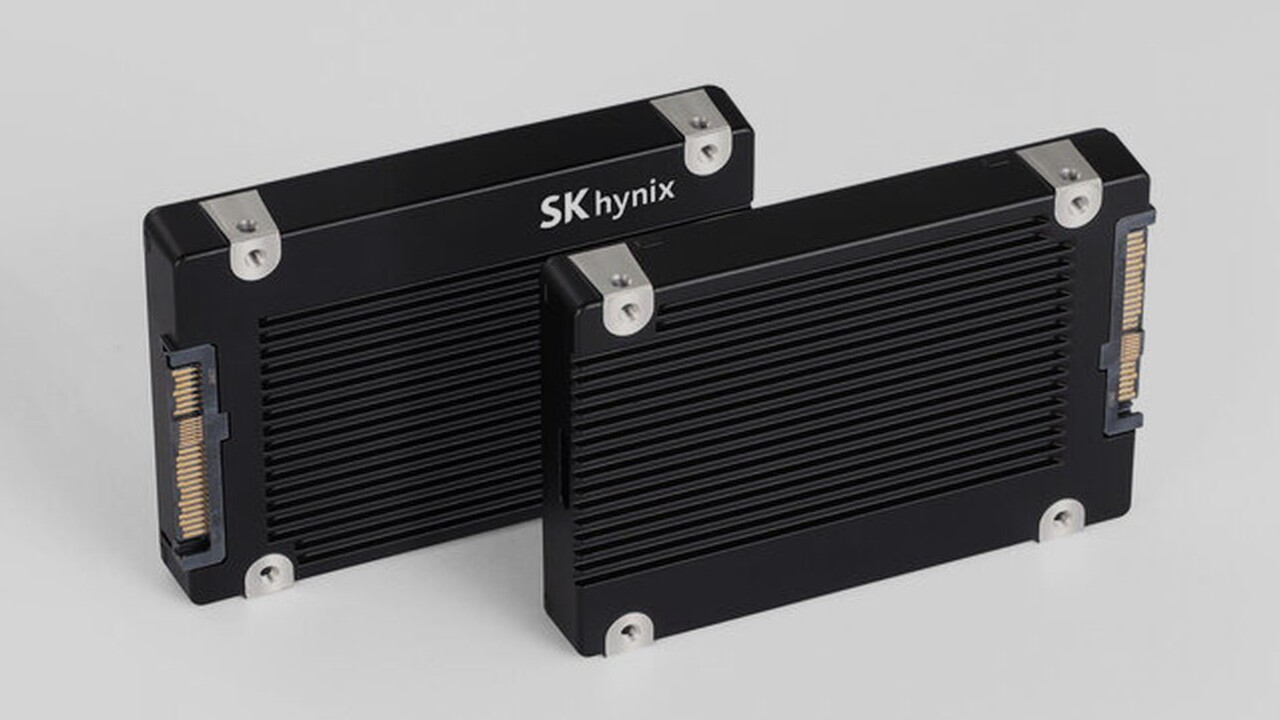9100 Pro without PCIe 5.0: Samsung‘s high-speed SSD with PCIe 4.0 is so fast

Inspired by a reader, Techastuce has retested the Samsung 9100 Pro SSD. Why? By limiting PCIe 4.0 in the overnight test, it’s worth finding out how great the advantage is via PCIe 5.0 – or whether the SSD is also worth it on a motherboard without the latest interface. Table of Contents: Samsung’s Fast High-Speed SSD with PCIe 4.0: The Flagship with Huge Differences in Readability, Handbrake in Benchmark and Copy in Gaming Test, Desktop Performance, Gaming Performance, Performance, Conclusion
The Flagship with Handbrake
With the 9100 Pro (test), Samsung is back in the high-end segment and offers performance close to the top of the range for SSDs with E26 controllers. That less power is required, and cooling requirements are correspondingly reduced.
But is the premium for a PCIe 5.0 SSD worth it at all? How much slower would a PCIe 5.0 flagship be if you artificially slowed it down to PCIe 4.0? Techastuce followed up on this question and once again put the Samsung 9100 Pro with PCIe 4.0 X4 instead of PCIe 5.0 X4 in the test. Samsung 9100 Pro SSD in the test
Samsung 9100 Pro SSD in the test
 PCIe 5.0 offers the greatest advantage in terms of maximum throughput, as it is measured in synthetic benchmarks such as the Crystaldiskmark. SSDs typically achieve their maximum performance when reading and writing with a string of 8 exceptional commands (Q8), which is also the benchmark for the information in the datasheet. The Samsung 9100 Pro achieves a solid 14.7 GB/s when reading and 13.4 GB/s when writing. This is almost twice as fast as its predecessor, the Samsung 990 Pro, which was equipped with PCIe 4.0 x4.
PCIe 5.0 offers the greatest advantage in terms of maximum throughput, as it is measured in synthetic benchmarks such as the Crystaldiskmark. SSDs typically achieve their maximum performance when reading and writing with a string of 8 exceptional commands (Q8), which is also the benchmark for the information in the datasheet. The Samsung 9100 Pro achieves a solid 14.7 GB/s when reading and 13.4 GB/s when writing. This is almost twice as fast as its predecessor, the Samsung 990 Pro, which was equipped with PCIe 4.0 x4.
While the Samsung 9100 Pro is now limited to PCIe 4.0 x4, it loses about 50% of its performance. It is then as fast as the Samsung 990 Pro, which also shows that the latter operates at the PCIe 4.0 limit. When it comes to sequential reads with only one exceptional command (Q1), which is closer to practice, the 9100 Pro in PCIE 4.0 mode still offers advantages and is almost 50% faster than the 990 Pro. There is virtually no difference in unselected reads.
The clear advantage of PCIe 5.0 is equally impressive when it comes to sequential writes. Unselected letters aren’t entirely impressive, as PCIe 5.0 offers no advantage here.
Reading and copying in the practical test
In practical reading, the 9100 Pro with PCIe 5.0 was as good as expected and even better than its high-end competitors. When using PCIe 4.0, performance drops almost nothing. With the SSD empty and the level at 80%, the 9100 Pro with PCIe 4.0 is almost as fast as with PCIe 5.0. It looks like a copycat test, only the small drawback is now in the PCIe 4.0 mode section. The main thing is that the practical test remains a tie between the interfaces. PCIe 5.0 offers no advantage here.
Gaming Benchmarks
In 3DMark Storage, the performance of the data carrier is determined when loading, copying, installing, or saving a game. There is also a test in which a gameplay video is recorded in parallel for playing. The score is based on the geometric averages of the individual tests, in which throughput and access times are recorded.
The Samsung 9100 Pro loses only 7% of its points at the PCIe 4.0 limit. The advantage of PCIe 5.0 is therefore relatively small. The new flagship is still 17% ahead of the 990 Pro.
Amouragement as a benchmark Avocados is Microsoft’s bulkload demo, which uses the DirectStorage API, which in turn can massively accelerate the loading of game files by directly transferring the data via the CPU to the graphics card’s video memory and decompressing it by the GPU. The measured throughput depends largely on the GPU, but also on the speed at which data is delivered by the SSD.
With the Samsung 9100 Pro on PCIe 5.0, 28.8 GB/s is possible. PCIe 4.0 limits performance by 10%, which is even faster than the best results achieved with native PCIE 4.0 SSDs. The Samsung 990 Pro with 2 TB was unfortunately no longer available for this test.
Office Service
The PCMark 10 system drive quick benchmark reflects simpler everyday tasks. The scenarios range from writing, reading, and duplicating image files to using Adobe Illustrator and Photoshop to Microsoft Excel.
In this benchmark, PCIe 5.0 only provides a wafer advance of 3%. With PCIe 4.0, the 9100 Pro is still 17% faster than the 990 Pro.
Power Consumption
With the maximum throughput rate halved by using PCIe 4.0 instead of PCIe 5.0, power consumption also decreases. This becomes particularly noticeable when the highest throughput rates are called up in the CrystalKiskMark sequential tests. The Samsung 9100 Pro with PCIe 4.0 only requires about 6 watts of power instead of 9 watts in PCIE-5.0 operation. But even in low-load phases, there are clear advantages in terms of power requirements with the slower interface.
Conclusion
Although the sequential throughput in the synthetic CrystalKiskMark is halved when switching from PCIe 5.0 to PCIe 4.0, performance in other benchmarks and practical tests does not drop as much for long. In gaming tests, the advantage of PCIe 5.0 is only about 10%. In practical reading and copying, as well as in the PCMark desktop benchmark, there’s almost no difference in performance.
Even at this point, the tangible benefits of PCIe 5.0 SSDs remain scarce. The Samsung 9100 Pro is barely slower with an artificial limitation on PCIe 4.0 and requires about a third less power, so the bottom line is even more efficient.
Except for uncompromising enthusiasts, the extra cost of PCIe 5.0 SSDs isn’t really worth it. A fast PCIe 4.0 SSD is generally slower.
Was this article interesting, useful, or both? The editorial team welcomes any support from Techastuce Pro and disables ad blockers. Learn more about monitors on the computer base.
Topics: Flash Memory M.2 NVME PCIe 4.0 PCIe 5.0 Samsung SSD Storage

Alice guides you through the best storage solutions, from ultra-fast SSDs to secure cloud options.

